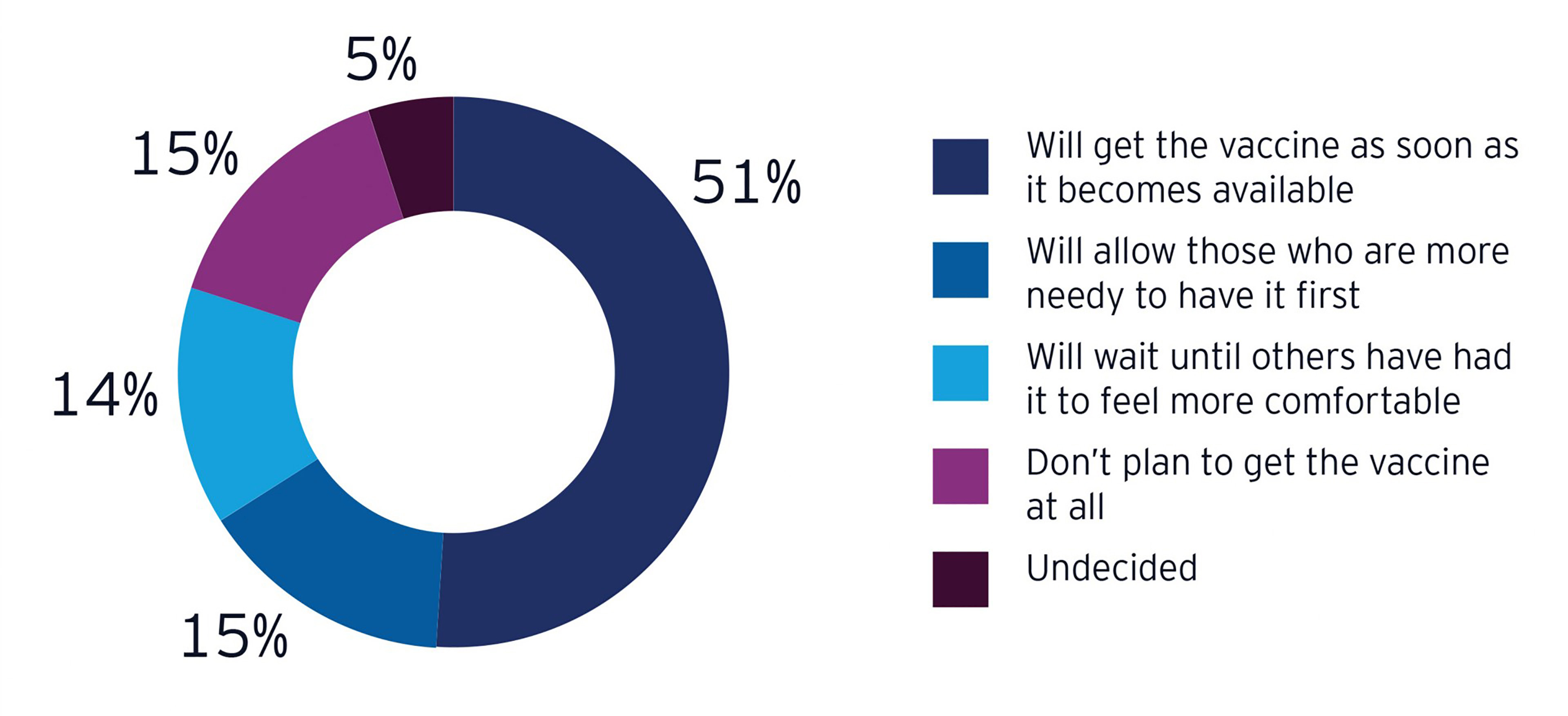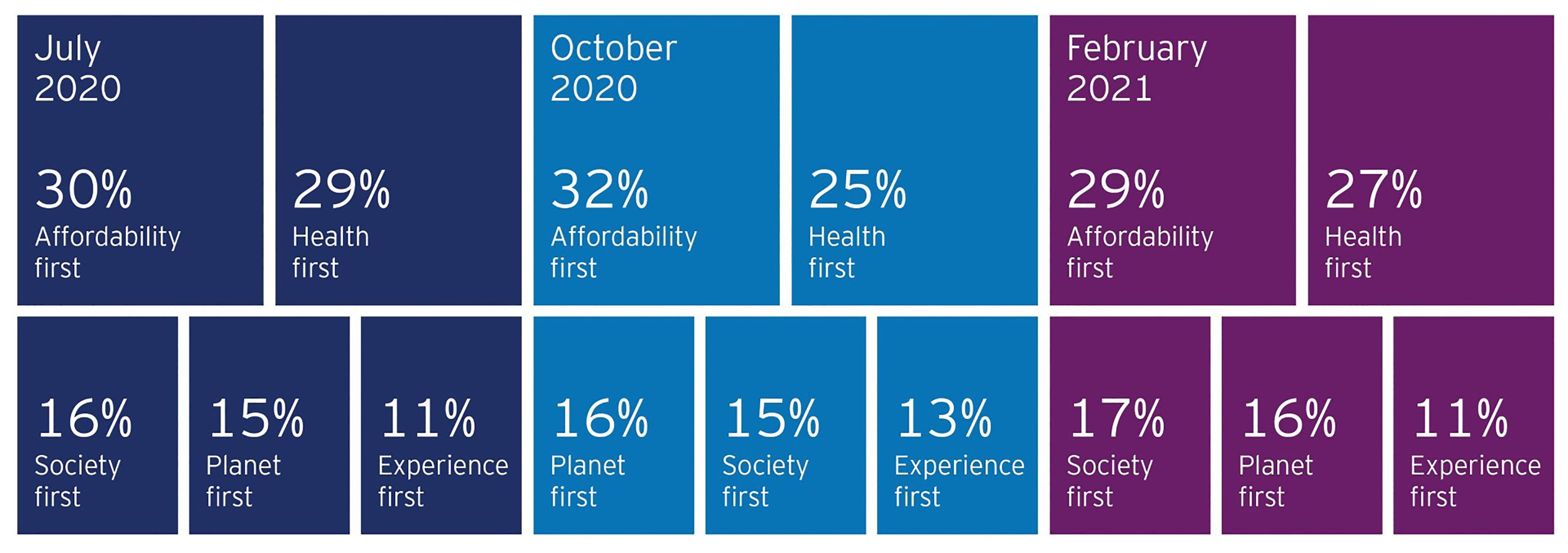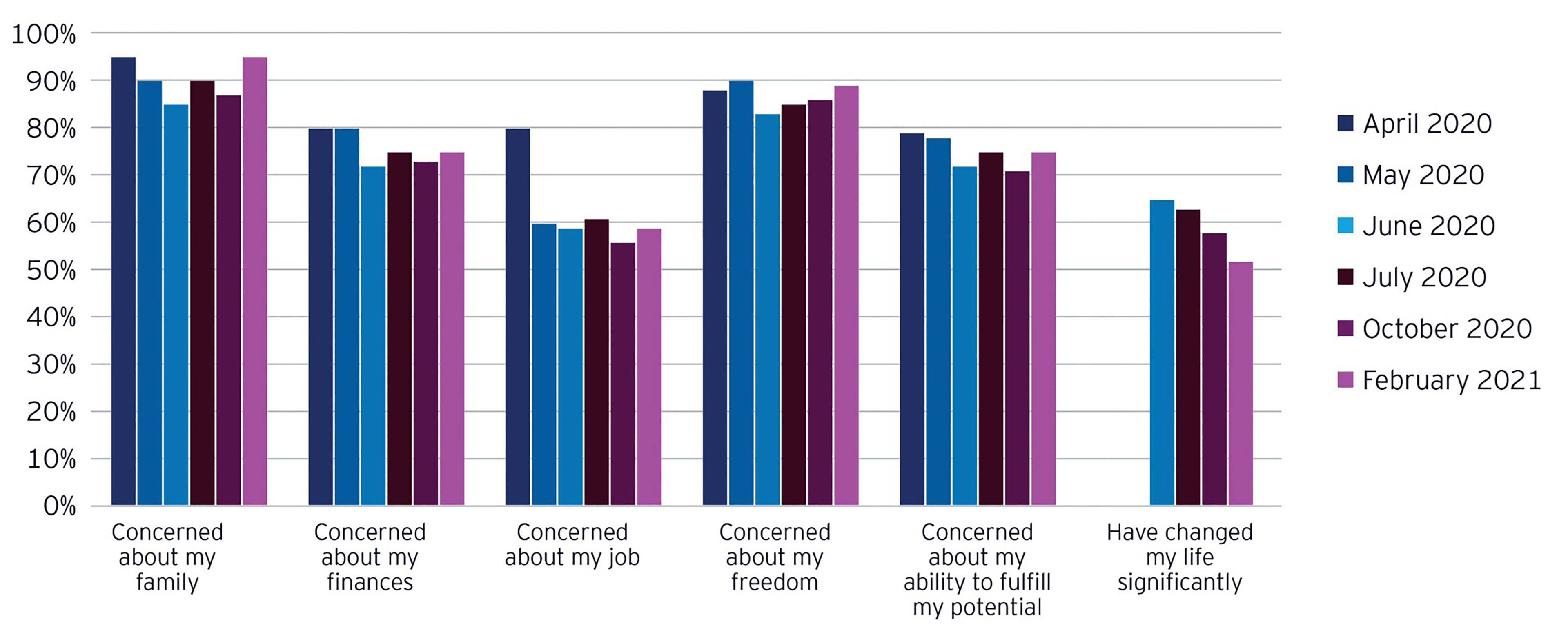
Chapter 1
Is vaccine the answer to consumerism?
The impact of a largely vaccinated population and a renewed sense of freedom on consumerism.
With a third viable vaccine in play and with a few states rolling back mask mandates, the light at the end of the tunnel seems closer and closer. It’s no secret that a vaccine could have a marked impact on people’s ability to get back out and do things — from sporting events, social gatherings and shopping more comfortably in stores. And many Americans, though not all, have plans to get the vaccine.

Consumers’ top reasons for taking the vaccine center around protection for themselves (77%), but also others (75%). In fact, more Americans say that COVID-19 will stop impacting their life when most of the population is vaccinated (56%) versus when they are vaccinated (29%). That said, as much as health and safety is a main reason to get vaccinated, US consumers are almost equally as ready for the possibilities it could bring.
Some suggest that we’re in store for another era like the Roaring ‘20s, while others believe that it will take time for some to feel comfortable setting aside social distancing practices. Interestingly, 39% of US consumers expect that life will be the same after receiving the vaccine and 15% think life will be worse. Perhaps, because there’s still a significant level of discomfort doing everyday activities, as more than half of all Americans are still uncomfortable exercising in a gym (57%), going to a theater or cinema (62%), going to a bar or pub (64%), going to experiential events (64%) and traveling on public transportation (66%).
Still, the world may again look much different in a year’s time. What might the impact of a largely vaccinated population and a renewed sense of freedom be for consumerism?
It’s true that some categories, like mall-based retailers and restaurants, could see a marked impact from herd immunity. However, it’s also clear that some shifts, like shopping online and at-home consumption, may not dissipate anytime soon. Humans are inherently social creatures, and while the shift to online will likely remain, the desire for post-pandemic social interaction and validation may drive us back to the store, either temporarily or to seek something new and different.
Future consumer
38%of consumers intend to do more shopping online and only visit stores that provide great experiences
The retailers and brands that have been able to shift supply chains to deliver through direct-to-consumer channels will continue to win. When consumers come back to stores, it will be for entertainment, for experience, for a purpose. Staples — no matter which — category should prepare for a permanent shift in an increased volume online. These issues, perhaps, provide an additional incentive to continue building up digital capabilities, enhancing the consumer experience across the entire journey and investing in alternative revenue streams.

Chapter 2
Consumer trends that have become truths
What changes in the consumer are permanent and not just temporary reactions?
Now that we’re settled into this new normal and have been measuring consumer sentiment as a result of COVID for almost a year, we can look back on the last 12 months and answer the question that matters most – what changes in the consumer are permanent and not just temporary reactions?

Chapter 3
What’s in store for consumer goods companies in 2021?
In February, CAGNY hosted their annual conference, where executive leaders from CPG companies gathered to present their growth strategies for 2021 and beyond.
In February, CAGNY hosted their annual conference, where executive leaders from some of the world’s largest CPG companies gathered (virtually) to present their growth strategies for 2021 and beyond. This year, the theme was around sustainable growth for the future, and it’s clear that CPG brands are keeping a pulse on the post-pandemic consumer to drive their strategic agenda and create long-term value.
As we look to what the consumer will want in the future, we must understand what they will prioritize. Beyond the pandemic, larger segments of Affordability First and Health First consumers indicate the importance of price and safety. But issues like the environment, societal change and experience can’t be discounted. Are CPG brands investing in the priorities that consumers are demanding?

The answer is, in large part, yes. Consumer brands are evolving their value propositions to meet consumer needs, and several of the key themes coming out of CAGNY closely align with where the Index finds consumers are evolving for the future. Here are three main takeaways:
1. Accelerating the transformation agenda
Transformation was always on the agenda for many CPG brands, but COVID-19 acted as a catalyst to accelerate those transformational initiatives.
Where will those transformations focus? Consumer-centric innovation – a thread woven throughout many of the CAGNY presentations.
For most manufacturers, this means aligning product innovation, new business models and operational execution with new consumer needs, whether that’s affordability, health or experience. This means operating model transformation to become more cost efficient while driving growth. This means digital transformation to enable ecommerce and direct-to-consumer, and a more rigorous focus on data and analytics. This means portfolio transformation to strengthen the core and invest in high growth categories.
2. Sustainability as a strategic imperative
Many of the brands at CAGNY discussed sustainability not as a compliance and reporting exercise, but rather a strategic imperative to drive long-term stakeholder value. Companies are facing increasing pressure from all sides to become sustainable, especially from the consumer. With more than 30% of consumers identifying as Planet or Society First, ESG must be at the top of the company agenda.
Forty-four percent of consumers will pay more attention to environmental issues in the future, Another 43% say environment and climate change will be a top priority in how they live and buy and 1 in 5 will value sustainability among their most important shopping criteria in the long-term.
Sustainability is now a matter of trust. Manufacturers must consider its role in every part of the business, from sourcing and packaging to operations and investments.
Related content
3. Supply chain transformation
The supply chain fragility and added cost pressure that emerged at the onset of COVID continues to challenge many manufacturers, but they are making the investments to transform their supply chain operations to expand capacity and agility. If CAGNY is any indication of the future of the manufacturing supply chain, automation and end-to-end planning to support real-time demand and increase speed-to-market will be the priority moving forward.
Consumer demand for transparency, availability and delivery will continue to drive the need for agile supply chains. Forty percent of US consumers say product availability will be among their most important purchase criteria in the future. The last mile is also a key component in supply chain transformation as 1 in 4 consumers say the most frustrating part of online shopping is slow delivery and 1 in 5 are not forgiving of brands who can’t deliver on their promise.
If you could see your supply chain, would it clear the path from first mile to last? Greater visibility and transparency across the supply chain can build resilience and yield opportunities to meet rapidly shifting consumer demands and better respond to supply chain disruption.
There’s been a massive amount of change in the last year, both for consumers as well as retailers and brands. As we assess where consumers are going and how companies say they plan to adapt, brands and retailers must:
- Deliver consistent direct-to-consumer experiences
- Do more than build a communications strategy around ESG, and truly build it into the ways of working that consumers value
- Leverage a broader set of ecosystem partners to add in resiliency, take out cost and show transparency of the product flow
- Build consumer journeys, not transactions
- Work together like never before to capture value
These areas will determine who wins the consumer of the future.
Summary
In the sixth edition of the EY Future Consumer Index, we explore consumers’ feelings about the COVID-19 vaccine, where they feel they are in life at almost a year out from the start of the pandemic, and what that means for retailers and brands. We also touch on the recent Consumer Analyst Group of New York’s (CAGNY) annual conference, and how CPG brands’ growth strategies align with where the consumer is going.


